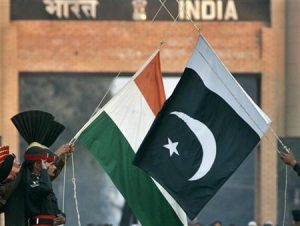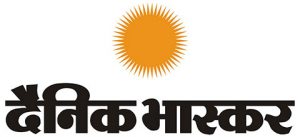
07-03-2017 (Important News Clippings)
To Download Click Here
महिला केंद्रित फिल्म पर रोक क्या बताती है?

रोबोट कर का असर

पहली समस्या: उनका कहना है कि आमतौर पर किसी कर्मचारी के अंतिम निर्धारित वेतन का प्रतिस्थापन किया जाता है। ऐसे में इस बात को लेकर अलग-अलग विचार हो सकते हैं कि प्रासंंगिक वेतन में कितनी बढ़ोतरी या कमी की जानी चाहिए। ऐसे मनमर्जी वाले और व्याख्या के अधीन रुख में भ्रष्टïाचार की बहुत अधिक आशंका रहती है। भारत में कर अधिकारियों का सामना करने वाले इस बारे में बता सकते हैं। दूसरी बात, सभी रोबोट मनुष्यों के रोजगार नहीं छीनेंगे। उनमें से कुछ ऐसे काम भी करेंगे जो मनुष्यों ने कभी किए ही नहीं। उन मामलों में प्रश्न यह उठता है कि किस वेतन स्तर पर कर लगेगा। तीसरी समस्या थोड़े दार्शनिक रुख वाली है। अगर मान लिया जाए कि रोबोट द्वारा प्रतिस्थापित किए जाने के पहले कोई मनुष्य एक खास मशीन को चला रहा था तो जब मशीन रही ही नहीं तो उस पर आयकर कैसे लगाया जा सकता है? इसके लिए गेट्स ने यह सुझाव दिया कि मोटा-मोटा कर लगाया जा सकता है कि जो स्वचालन की गति को धीमा कर देगा। यह बात उत्पादकों को इस बात के लिए भी प्रेरित कर सकती है कि वे कृत्रिम बुद्घिमता की जगह मौजूदा मशीनरी का इस्तेमाल शुरू कर दें। इससे स्वचालन का पूरा विचार ही विफल हो जाएगा।
अमेरिका में इस बात को लेकर बहस की तीव्रता इस बात को रेखांकित करती है कि रोबोट का आगमन किस कदर उथलपुथल पैदा कर सकता है और उससे निपटने के लिए नीतिगत प्रतिक्रिया में स्थिरता लाने की आवश्यकता है। इसे लेकर कर्मचारियों पर कुल वेतन कर लगेगा जो उन पर बोझ डालेगा। इसके अलावा लाभांश से होने वाली आय और पूंजीगत लाभ पर कर लगाकर यूबीआई को वित्तीय मदद मुहैया कराना भी इसमें शामिल है। भारत में इसके लिए इतर प्रतिक्रिया की आवश्यकता है। चीन और जापान में जहां रोबोट को इसलिए बढ़ावा मिल रहा है क्योंकि वहां कामगार वर्ग उम्रदराज हो रहा है, वहीं भारत में ऐसी कोई दिक्कत नहीं है इसलिए यहां लागत कोई मुद्दा नहीं है। उदाहरण के लिए भारत में हर साल 15 लाख इंजीनियर तैयार होते हैं। इनकी प्रति घंटा श्रम लागत एक डॉलर से भी कम है। इसके बावजूद देश में तमाम कंपनियां कृत्रिम बुद्घिमता के पीछे हैं क्योंकि कुशल श्रमिकों की कमी है। अधिकांश इंजीनियर अमेरिका चले जाते हैं जबकि करीब एक चौथाई बेरोजगार रह जाते हैं। उस दृष्टि से देखा जाए तो विभिन्न सरकारों ने कौशल विकास पर कतई काम नहीं किया है। वर्ष 2022 तक 40 करोड़ लोगों को प्रशिक्षित करने का लक्ष्य भी दूर की कौड़ी नजर आ रहा है। ऐसे में गेट्स का रोबोट कर शायद भारत पर लागू नहीं हो। परंतु रोबोटीकरण के कारण भविष्य में रोजगार तैयार होने की कमजोर दर का असर भविष्य में सामाजिक अशांति को बढ़ावा देगा। इससे यह भी पता चलता है कि उचित प्रशिक्षण और कौशल संबंधी पहल पर बल देने की आवश्यकता है। तभी व्यवस्था बरकरार रह सकेगी।
Date:07-03-17
सबको बुनियादी आय पर रजामंदी की हकीकत
यूबीआई को लेकर आम सहमति बन चुकी है। इस सहमति का उल्लेख करते हुए उसकी भविष्य की राह की विवेचना कर रहे हैं रथिन रॉय
अर्थशास्त्रियों के बीच यह मुद्दा बहस का विषय रहा है कि देश में सार्वभौमिक मूलभूत आय (यूबीआई) पेश करने की आवश्यकता है अथवा नहीं। यूबीआई से जुड़ी बहस गरीबी उन्मूलन के तरीके के रूप में उसकी उपयोगिता से संबंधित है। यह उपयोगिता मनरेगा, सब्सिडी और सार्वजनिक वितरण प्रणाली जैसे मौजूदा उपायों के बरअक्स है। साथ ही इस बात पर भी चर्चा चली कि इसी योजना को व्यवहार्य बनाने के लिए राजकोषीय गुंजाइश है या नहीं। आर्थिक समीक्षा में इस विषय पर चर्चा की गई। समीक्षा में यह उचित ही कहा गया कि इस विचार को विचारधारा से परे हटकर सबका समर्थन मिला है। लेकिन देश की राजनीतिक अर्थव्यवस्था को लेकर कोई बहुत सकारात्मक अनुमान नहीं हैं और यूबीआई के समर्थकों और इसके विरोधियों ने इसकी अनदेखी की है या कहें इससे बचकर निकल गए हैं।
सबसे पहले उन भ्रमों को दूर करते हैं जो बहस से अब तक सामने आए हैं। यूबीआई को लेकर कहा गया कि इसे वित्तीय मदद मुहैया कराने के लिए तमाम अन्य सब्सिडी और स्थानांतरण खत्म किए जा सकते हैं। यह सहज और सरल है। देश में कीमत आधारित सब्सिडी नाकाम हो चली है क्योंकि वह वांछित लक्ष्य को पूरा ही नहीं कर पाती। लेकिन गरीबी उन्मूलन उनका लक्ष्य भी नहीं है। भले ही राजनीतिक तौर पर यह दलील देना सहज हो कि वे गरीबों के लिए हैं। खाद्य और उर्वरक सब्सिडी से किसानों को राहत देने का प्रयास किया जाता है और उन लोगों को सस्ता खाद्यान्न मुहैया कराया जाता है जिनको इसकी जरूरत होती है। इन दोनों बातों से गरीबों को मदद मिलती है। अधिकांश अन्य सब्सिडी मसलन कर रियायत आदि वृद्घि दर बढ़ाने के लिए होती हैं या फिर निर्यात सुधारने अथवा ढांचागत बदलाव के लिए। यहां तक कि मनरेगा के लक्ष्य भी स्पष्टï नहीं हैं। इसका उद्देश्य सार्वजनिक कामों की मदद से रोजगार मुहैया कराना है। इसका लक्ष्य तभी पूरा होता है जब इसकी बदौलत पूंजीगत परिसंपत्ति तैयार हों। अगर इसका लक्ष्य केवल रोजगार की कमी को दूर करना होता तब तो सीधे लोगों के खाते में भी 100 दिन के न्यूनतम रोजगार का पैसा जमा कराया जा सकता था। बाद वाले कदम से गरीबी कम हो सकती है जबकि पहले वाले कदम को गरीबी उन्मूलन का तरीका नहीं माना जा सकता।
यूबीआई को अगर सार्वभौमिक नहीं बनाया गया तो यह बेमानी होगा। इसलिए जो लोग गरीबी उन्मूलन के लिए लक्षित मूलभूत आय की बात करते हैं लेकिन यूबीआई की बात नहीं करते। वे गरीबों के लिए आय सब्सिडी चाहते हैं। विकासशील अर्थव्यवस्था वाले देशों ने अब यह स्वीकार कर लिया है कि गरीबों को यूंही लाभान्वित करते रहना गरीबी की समस्या का हल नहीं है। यह काम आर्थिक वृद्घि की मदद से ही हो सकता है। गरीबी हटाने के लिए वृद्घि में भागीदारी जरूरी है।
सबसे साधारण ढंग से देखें तो यूबीआई एक नकारात्मक आय कर है। जरा कल्पना कीजिए कि हर वयस्क भारतीय के पास एक पैन नंबर है। हर महीने कुछ भारतीय कर चुकाते हैं और कुछ के पैन कार्ड से जुड़े बैंक खातों में सरकार की ओर से पैसा आता है। यूबीआई के लब्बोलुआब को इससे समझा जा सकता है। यानी कराधान की मदद से आय के वितरण में बदलाव। यानी अधिक आय वाले लोगों की आय का कुछ हिस्सा कम पाने वालों को आर्थिक गतिविधियों के बदले देना। राज्य का यह हस्तक्षेप आय की असमानता कम करेगा।
इसके पीछे मूल विचार लोक कल्याणकारी अर्थव्यवस्था के दूसरे सिद्घांत में वर्णित है। यानी जब कोई अर्थव्यवस्था सुस्थिर स्थिति में पहुंच जाती है। वह वृद्घि दर जिस पर श्रम और पूंजी का पूर्ण इस्तेमाल हो पाता है। उस वक्त सरकार राजकोषीय नीति की मदद से आय के वितरण को बदल सकती है। इसके लिए वह अमीरों पर कर लगा सकती है ताकि गरीबों को बिना वृद्घि दर से समझौता किए कुछ दिया जा सके। संसाधनों के पूर्ण इस्तेमाल के बावजूद बाजार आय के सही वितरण में नाकाम हो सकते हैं, तब राज्य का हस्तक्षेप आवश्यक है।
बाधा यहीं पर है। कल्याणकारी अर्थव्यवस्था का दूसरा सिद्घांत तब लागू होता है जब संसाधनों का पूरा इस्तेमाल हो रहा हो। भारत जैसी उभरती और विकासशील अर्थव्यवस्था वाले मुल्कों पर यह बात लागू नहीं होती। इसलिए पूरा ध्यान स्थिर और उच्च विकास पर केंद्रित है। आर्थिक गतिवधियां, उत्पादकता और मेहनताना बढऩे के साथ-साथ आय भी बढ़ती है और मुनाफा भी। वृद्घि के लाभ हर किसी की आय में इजाफा सुनिश्चित करते हैं और उनके जीवन मानक भी सुधरते हैं। ऐतिहासिक रूप से सफल हर सामाजिक बदलाव में यह देखने को मिला। ऐसे में अगर भारत वास्तव में एक साल में 8 फीसदी की दर से वृद्घि हासिल करती है और सबकी आय सालाना 6 फीसदी की दर से बढ़ती है तो सभी भारतीयों की वास्तविक आय 2035 तक तीन गुनी हो जाएगी।
जैसे-जैसे यह प्रक्रिया चलती है आय के वितरण में सरकार का हस्तक्षेप केवल सामाजिक सुरक्षा मुहैया कराने तक रह जाता है। वह भी ऐसे वर्ग के लिए जो वृद्घि में भागीदारी कर पाने में नाकाम है। करों का इस्तेमाल स्वास्थ्य और शिक्षा जैसे सामाजिक कामों के लिए किया जाएगा। इसके अलावा उसका इस्तेमाल राष्टï्रीय हित के कामों मसलन रक्षा और न्याय आदि के क्षेत्र में किया जाएगा।
ऐसे में यूबीआई को लेकर राजनीतिक सहमति एक परेशान करने वाली स्वीकारोक्ति की ओर ले जाती है: 15 साल में भारत का जीडीपी तीन गुना हो जाएगा लेकिन ऐसी कोई उम्मीद नहीं कि इससे सार्वभौमिक बेहतरी आएगी। मानव संसाधन और वित्तीय पूंजी पर काबिज चंद लोगों को वृद्घि का सबसे अधिक फायदा मिलता है और उनको सबसे अधिक आय भी अर्जित होती है। शेष लोग जो देश की आबादी के आधे से अधिक हैं, उनको इस तबके से स्थायी हस्तांतरण हासिल होगा। इसकी वैकल्पिक व्याख्या यह है कि इस बात पर वैचारिक सहमति है कि भारत 8 फीसदी की विकास दर हासिल नहीं कर पाएगा। यह इस बात की स्वीकारोक्ति है कि हमारी वृद्घि की राह असमान बनी रहेगी। ऐसे में प्रधानमंत्री का यह वादा भी हकीकत से दूर रहेगा कि हर परिवार को एक सम्मानजनक रोजगार मिलेगा। अगर ऐसा हो सकता तो देश के अधिकांश लोगों को यूबीआई की आवश्यकता ही नहीं होगी। आर्थिक समीक्षा में कहा गया है कि हमें आय और रोजगार के एक साथ एक दिशा में लंबे समय तक आगे बढऩे की उम्मीद नहीं है। लेकिन हमें हकीकत का सामना अधिक बेहतर ढंग से करना होगा। यूबीआई को जो सर्वदलीय स्वीकृति मिली है वह इस बात की स्वीकारोक्ति है कि देश के भविष्य में समावेशी विकास की संभावना नहीं नजर आ रही। ऐसे में सरकार को निरंतर हस्तक्षेप करते रहना होगा। इतना ही नहीं उसे आय के वितरण को भी सुधारना होगा जब तक कि अर्थव्यवस्था अपनी पूरी क्षमता से प्रदर्शन नहीं करती।
Leave PoK alone
Attempts to integrate it with the rest of India will lead to violent after-effects

Can the integration of PoK with the rest of India be a permanent solution to the Kashmir issue? When we see the issue in its perspective on economic, social, political or technical lines, it becomes more and more clear that the Kashmir issue will not be resolved even if we secure PoK.
Merely acquiring 13,000 square kilometres of land will certainly not help the cause of Kashmir. As the great strategist Chanakya has said, a family can be sacrificed for the good of a village; a village can be sacrificed for the good of a country. India today with a population of 1.25 billion has an area of 3.287 million sq km. Acquiring a patch of land the size of a small district, and embracing all the violent after-effects, is likely not to bring a sensible solution.
India devotes about 35 per cent of its annual budget to its defence and security. One of the main reasons for this is the ongoing conflict along the Line of Control in Kashmir. If we believe that conquering this nest of militancy and violence will solve our inherited problem, then we are living in a fool’s paradise. If India does indeed “get back” PoK, we will end up spending 50 per cent of our budget on defence alone. Do we need this? And moreover, there are no safeguards to ensure that such a move will translate into long-lasting peace.
There will, of course, be arguments that integrating PoK with Kashmir will lead to the development of the beautiful valley which has not seen much progress. In the last several decades, Pakistan has not shown an iota of interest in either peace talks with India or engaging with separatist movements in PoK. Earlier, former Prime Minister Atal Bihari Vajpayee undertook the Samjhauta Bus journey to Lahore. We all know the outcome — the Kargil war. The Simla Pact, Agra Agreement, Lahore Declaration and other agreements remained just words. Will Pakistan allow for a quiet passage of PoK to India?
We all desire the development of Kashmir. Jammu and Kashmir has been granted autonomous status vide Article 370 of the Constitution, which entails various special provisions. Our focus should be on Kashmir itself and the well-being of its people. Gaining possession of the disputed land will not ensure its inclusion in the development process. Given the terror infrastructure ingrained in PoK and the fact that a section of its population is radicalised, it is unlikely that India’s “helping hand” will be welcome.
The rational thinker, Basavanna, said that a spark in the neighbour’s house will burn down your own as well. Kashmir has its own set of problems. If a move is made to occupy the disputed land, the flames of terror in the neighbourhood will not only engulf PoK, but will also claim Kashmir. In our greed for PoK, we may lose Kashmir as well. This will further strengthen the arguments of the separatists. If the entire Kashmir region demands separation from India, we will end up giving away more than we expected.
Keeping aside our emotions, if we think on political, logical and ethical grounds, it becomes apparent that gaining PoK will not serve any purpose. Those who disagree may say that PoK is an integral part of India and not regaining it would mean an embarrassment. I would have gladly accepted the argument had it been within a decade or two after Raja Hari Singh’s initial appeal for help. There has been more than seven decades of stalemate over PoK. There seems to be no silver lining in sight.
Date:06-03-17
Many meanings of corruption
The Supreme Court’s recent reading of the law of contempt comes as a welcome relief

The narrative basically, even now, remains deeply hierarchical. It is heavily focussed on the district judiciary: Retired CJI V.N. Khare said in an interview that “corruption in lower courts is no secret”, and recommended a team of “dedicated judges” (mostly retired) to monitor and arrest its further spread. The second narrative suggests that the “rot” may have reached some high courts; and the origins of transfer of judges as a national policy lay firmly located in this narrative.
The third narrative suggests that acts of corruption have reached even the shores of the Supreme Court. Shanti Bhushan (and Prashant Bhushan) created a perfect moral storm in 2010 by naming eight CJI among 16 justices who were allegedly corrupt. He gave the names in a sealed envelope to the Supreme Court and even dared it to prosecute them for contempt! And this narrative was embellished by the irrepressible Justice Markandey Katju, as late as 2015, to morally impeach many justices in “higher courts”.
Everybody agrees that judgments, and accompanying interim orders, should not be sold and bought for a price. But other surrounding concepts await deeper analysis. Is “son stroke” (where near relatives of a sitting judge practice in the same jurisdiction) a corrupt act? Do always buying of land and property by close relations of a judge evidence judicial corruption? What if a judge’s spouse is an independent professional or otherwise lucratively employed? Is a membership by incumbent justices of retired justices housing society a corrupt act? Does an informal agreement to head a statutory body or a commission prior, or on the eve of retirement, amount to corruption? Should past association with a firm of lawyers, or an individual counsel, be regarded retrospectively as a potentially corrupt act or at least a ground of judicial transfer? And, how is any appellate justice to be adjudged as performing a corrupt act under the recent NJAC judgment, which suggests Third Schedule (oath of office) obligation not to recuse? How is one to describe the varieties of judicial “misconduct” as different from impeachable offences?
Careful writing will draw some bright lines between corruptibility in general and specific acts of corruption, or folklore of corruptibility and the fact (actual incidence) of judicial corruption. There is thus a distinction between (as philosopher Seyla Benhabib counselled) “generalised” and the “concrete” other. Even as a folklore grows, facts are hard to come by or establish. The folklore matters as an “evidence” of widespread popular belief about judicial governance corruption. The dominant judicial narrative accentuates contempt jurisprudence, lest popular mistrust may grow and generate collective disobedience of court’s orders, and directions. But too frequent activation, or deployment, of contempt powers may also produce a chilling effect on freedom of speech and expression and of the media freedom to report.
The constitutional courts in India remain confronted by a democratic dilemma; they have tried to walk a fine balance but the belief in contempt power is so strong that media stories are routinely killed in the apprehension of protracted judicial proceedings. The Supreme Court of India breathes a fresh air when it virtually quashes the contempt action against Transparency International and the Centre of Media Studies. It rightly remarked that such surveys “instead gave opportunity to address the malady in the system”. A bench led by Chief Justice of India J.S. Khehar (comprising also Justices D.Y. Chandrachud and Sanjay K. Kaul) said the law of contempt would not “ordinarily” extend to interview and compilation concerning corrupt judicial practises (such as bribing and exercising influence). “Where will research go if this is contempt?” asked the Court.
This is welcome relief, but we must, however, note that it came after a 11-year wait! The learned CJI, around the same time, suggested a “mechanism” for taking a “second call” on government litigation. His Lordship estimated thus a 10 per cent case-load reduction. Of course, there is some linkage between the oft-noted judicial governance corruptibility and workload delays, providing a further argument for urgency of judicial appointments and elevation.
Judicial corruption (in the strict sense of buying and selling orders and judgments) is a serious menace to basic individual freedoms. It is also inimical to judicial independence and to the constitutionally desired social order. The constitutional process for the removal of justices need not be politically cumbersome, if a constitutionally sincere approach were to prevail. And this is one constitutional process that may not belong rightfully to the judiciary, lest it prove contrary to the rule of law maxim: No person shall be a judge in her own cause.
Justice K. Ramaswamy said wisely and well, as far back as 1995, that “criticism of a judge’s conduct or of the conduct of a court even if strongly worded, is, however, not contempt,” if it is “fair, temperate and made in good faith and is not directed to the personal character of a judge or to the impartiality of a judge or court”. And we may do no better than to adhere to this constitutional prescription.
Date:06-03-17
Veiled threat
The BJP’s demand to screen burqa-clad voters is inconsistent with Election Commission protocols
This is not the first time the BJP has made such a demand. During assembly elections in Assam last year, it went to the extent of demanding voice tests for women voters in burqa. The EC had then pointed out that a voter — including one in burqa — is allowed to cast her vote only after the poll officer verifies her photo identity card. It seems that the BJP’s remarkable win in Assam has done nothing to change its stand on women voters in the traditional Islamic attire. The party’s new demand also shows that it is either ignorant of the protocols of the EC or wants to undermine them. These protocols do not give security officers the authority to check a voter’s identity. The agency’s Handbook for Returning Officers has a provision for the identification of pardanashin women. They permit the presiding officer to rope in a local woman to identify a woman in a veil of any sort in case of doubt.Female voter turnout in the country has increased from 46 per cent in the 1962 general election to more than 65 per cent in 2014 — the gap between male and female participation has narrowed down to 2 per cent. The BJP’s attempts to give a communal colour to the participation of a section of women in the electoral process could reverse the trend. The party would do well to retract its demand to the EC.


